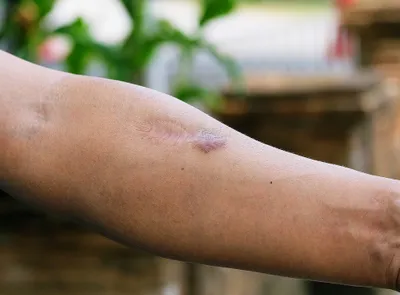It can happen when you least expect it—your neighbor’s dog nips your finger, or worse. While most dog bites aren’t too serious on the surface, there are precautions that should be taken following a bite to prevent further illness.
It’s important to seek medical attention following a canine bite, as there could be more damage than you think. Remember, it’s not just the big dogs that bite, and it’s not always in situations where the animal is provoked. Here are seven facts about dog bites to chew on…
1. Dog Bites are the Most Common Animal Bite
According to MedicineNet.com, dog bites account for more than 90-percent of all (reported) animal bites. How many dog bites is that exactly? According to the source, people are bitten by a dog 4.5-million times every year in the U.S.
While many of the wounds are superficial, quite a few of them require more than bandages and antiseptic solutions. The source notes that of the total number of bites, 27,000-victims require reconstructive surgery.
2. The Bites can Cause Nerve Damage
There are actually 3-types of nerve damage that can be caused by a dog bite, thanks to info provided by certain law firms helping people take legal action following a mishap (speaking of lawsuits, dog bites were responsible for 1-third of all homeowners’ liability claims in 2009 totalling $412-million, according to the Insurance Information Institute).
The nerve conditions range from Neurapraxia, which is temporary damage that usually ends with a full recovery; Axonotmesis, when the nerve is stretched and potentially causes loss of use of a limb; and Neurotmesis, which is the worst of the trio and causes permanent damage (although there is some hope of partial recovery).
3. You May Need a Shot
In some cases you can assess the wound yourself to determine the level of medical care you should seek, according to the Mayo Clinic. If you know that the animal has been immunized and the bite “barely breaks the skin,” you can wash it thoroughly with soap and water and apply an antibiotic cream, it adds.
However, if there is a substantial wound, you’ll probably want to contact your doctor about possible treatment. This can include a tetanus shot or booster given as soon as possible following the bite, says the clinic. Tetanus (also known as lockjaw) can be a life-threatening infection if not treated.
4. Younger Victims are Common
Dogs don’t consider the age of the person when they decide to bite, according to a study from the Phoenix Children’s Hospital and the Mayo Clinic. While an almost equal number of males and females were admitted to the hospital for dog bites from 2007 to 2013, a disproportionate number were younger children.
The most common patient age was 5-years, the study found—and some of those admitted were as young as 2-months. Of the 670-patients treated during that year range, 282-cases “were severe enough to require evaluation by the trauma team or transportation by ambulance.”
5. There are Lasting Psychological Effects
While a dog bite can happen in a flash and not even break the skin’s surface, your trust in dogs and your emotional well-being can be damaged in the long-term, notes an article from the Seattle Times (which focuses on a case with major injuries).
The article discusses some disturbing physical trauma from a dog bite, adding that the patients in these serious cases “suffer for years, if not the rest of their lives, with physical pain and nerve damage, emotional shock from disfigurement, and the financial toll of repeated surgeries and therapy.” Post Traumatic Stress Disorder (PTSD) is a common side effect of a dog bite, adds the source.
6. There are Ways to Reduce Bite Risk
The American Veterinary Medical Association (AVMA) focuses on prevention of dog bites, and even has a weeklong campaign it launches each May. The source notes that there are an estimated 70-million household dogs in the U.S., and explains that most of the bites associated with canine pets are preventable.
A couple of the suggestions from AVMA the source include properly socializing the dogs and also teaching your children when and how they should approach a dog (this includes avoiding dogs they don’t know that are off-leash). One should always ask permission from the owner to pet a dog, as the owner should know the temperament of the animal.
7. Learn the Warning Signs
In many cases, the canine will tell you if you’re in danger of being bitten. The website Petful.com explains there are several telltale behaviors of the dog that may prompt you to back off or leave the area for your own safety.
The site suggests when it comes to strange dogs, “always assume that the dog is not friendly and walk away.” Warning signs include direct eye contact from the animal, growling, tail up, perked ears, and baring their front teeth. Some domestic animals have “ learned to mask obvious indicators of biting,” so it’s best to err on the side of caution, notes the source.










